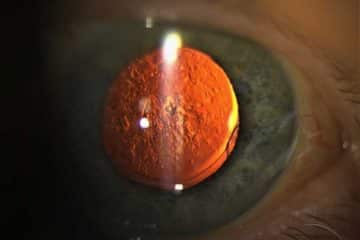Starting around age 40, the lenses of your eyes start becoming cloudy, a condition known as cataracts. In many people, cataracts eventually become so dense that their vision becomes blurry or distorted. By age 80, more than half of Americans will have developed a cataract or had cataract surgery.
This surgery — a quick, safe procedure that involves replacing the clouded lens with a clear plastic one — offers a very effective cure. But unless your eye doctor advises otherwise, you may not need to have surgery right away.
“Most cataracts progress very slowly and can be safely observed until you feel you need better vision — for example, if you have difficulty reading or seeing street signs,” says Dr. Laura Fine, a cataract specialist and clinical instructor in ophthalmology at Harvard Medical School. One of the most common early symptoms of cataracts is poor night vision, especially in the rain or when driving. People often complain of seeing glare or starbursts from headlights when driving at night, she adds.
Tips for coping with early or small cataracts
In the early stages of cataract formation, you might notice a slight decline in your vision, but not so much that it affects your day-to-day activities. In some cases, the lens simply thickens, causing nearsightedness, rather than becoming opaque. When that’s the case, the following tips can help.
- See your eye doctor for a new eyeglass or contact lens prescription.
- Put brighter lightbulbs in the lamps around your home, especially the ones you use to read or do other close work.
- Reduce glare by positioning lights directly behind you, pointed on the task (such as on the book you’re reading).
- Use magnifying lenses to read or work.
- Place contrasting colors — such as a dark blanket on a light chair — around your home to help you see better.
These measures help many people safely delay cataract surgery for years. Some end up never needing surgery. But people who rely on their eyes for detailed work, such as architects, dentists, and jewelers, may need surgery sooner than others.
Ready to consider cataract surgery? What to know beforehand
Typically, people have surgery in the eye with the denser cataract first. If the other eye has only a minimal cataract, a second eye surgery many not be needed for years. However, most people with age-related cataracts have similar disease in both eyes, and the second eye is usually done a few weeks after the first one, once it’s had a chance to heal.
Because there are follow-up visits one day and one week after each surgery, the whole process generally takes about two months in all, says Dr. Fine. People often need to plan their cataract surgeries around other medical procedures, travel, or family plans.
It’s a good idea to sort out logistics in advance, Dr. Fine notes. For example:
- In addition to a ride home after the surgery, some older patients may need drivers or caregivers to be with them for follow-up visits, and possibly to assist with administering eye drops following surgery.
- For the first few weeks after cataract surgery, it’s important to take certain precautions. During the first week, people should avoid lifting things heavier than 10 to 15 pounds. For the first two weeks, people shouldn’t wear eye makeup and should also avoid swimming, baths, and hot tubs.
Vision may be blurry in the first few days after surgery, but gradually will improve. “Most people remark that things appear brighter and clearer,” says Dr. Fine.
More than 95% of people who undergo cataract surgery end up with visual acuity of 20/40 or better. Still, most people will likely still need glasses for reading or driving.
More: Laser Catract Surgery


